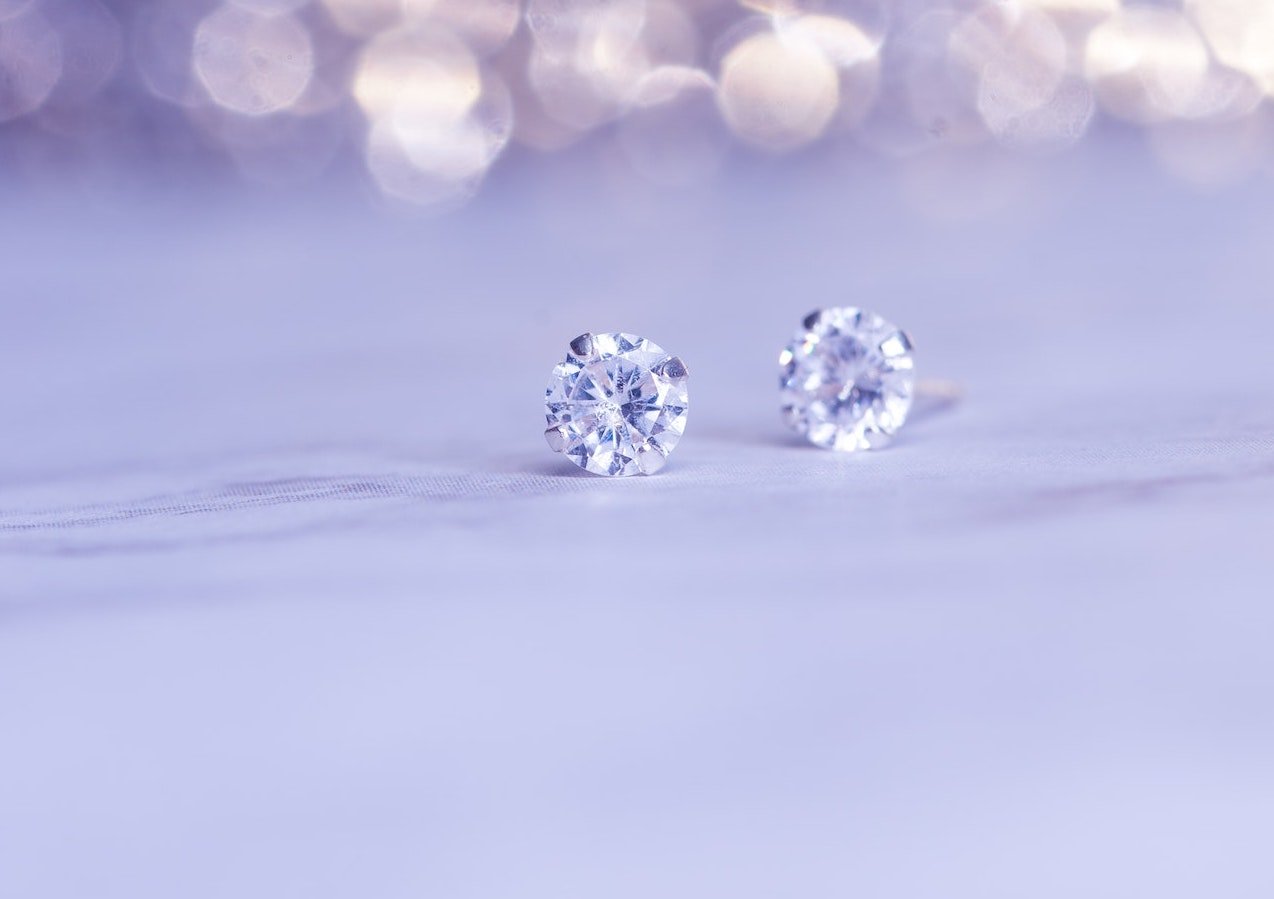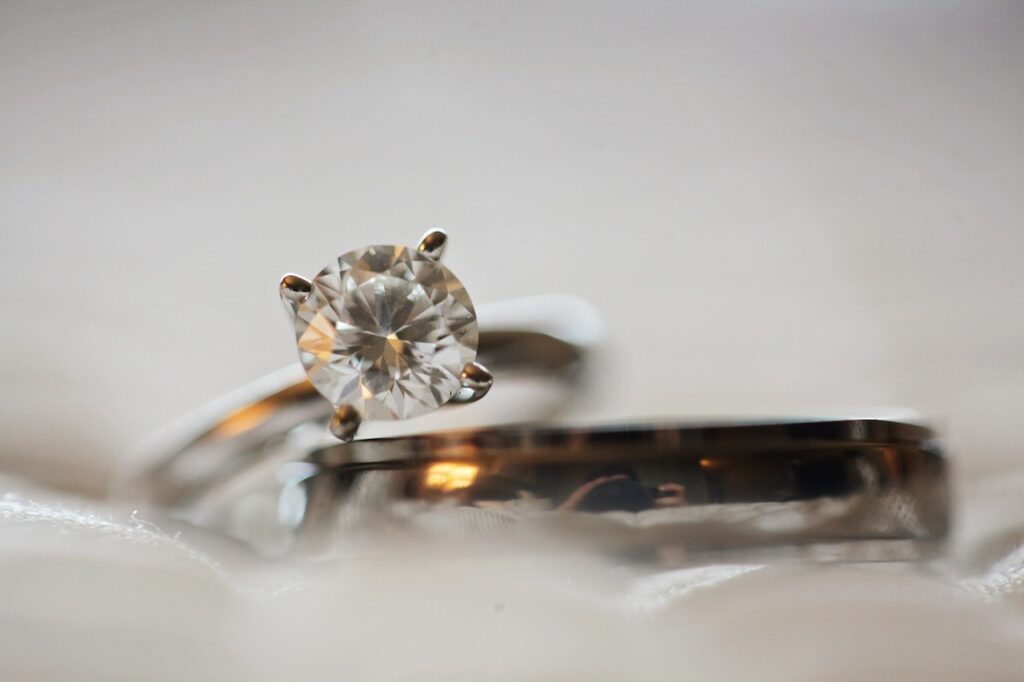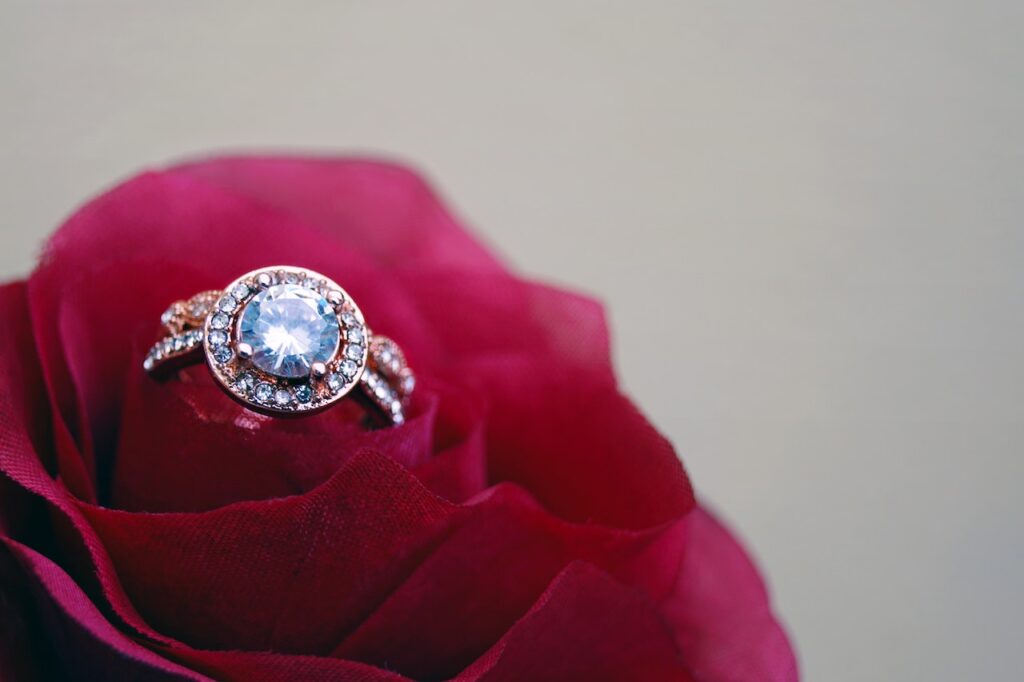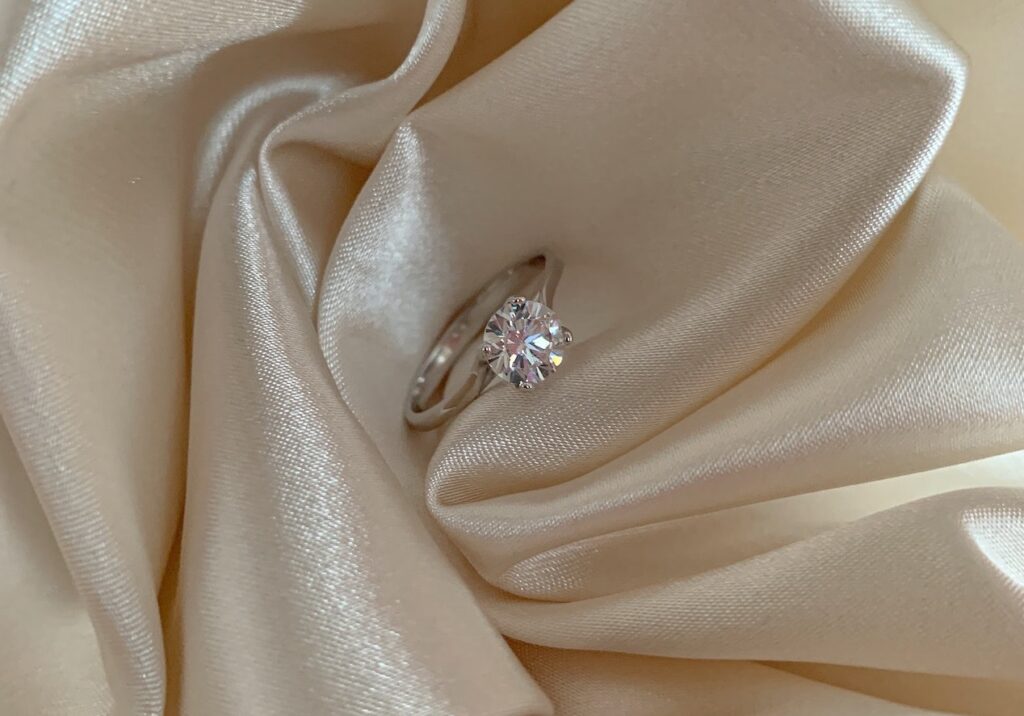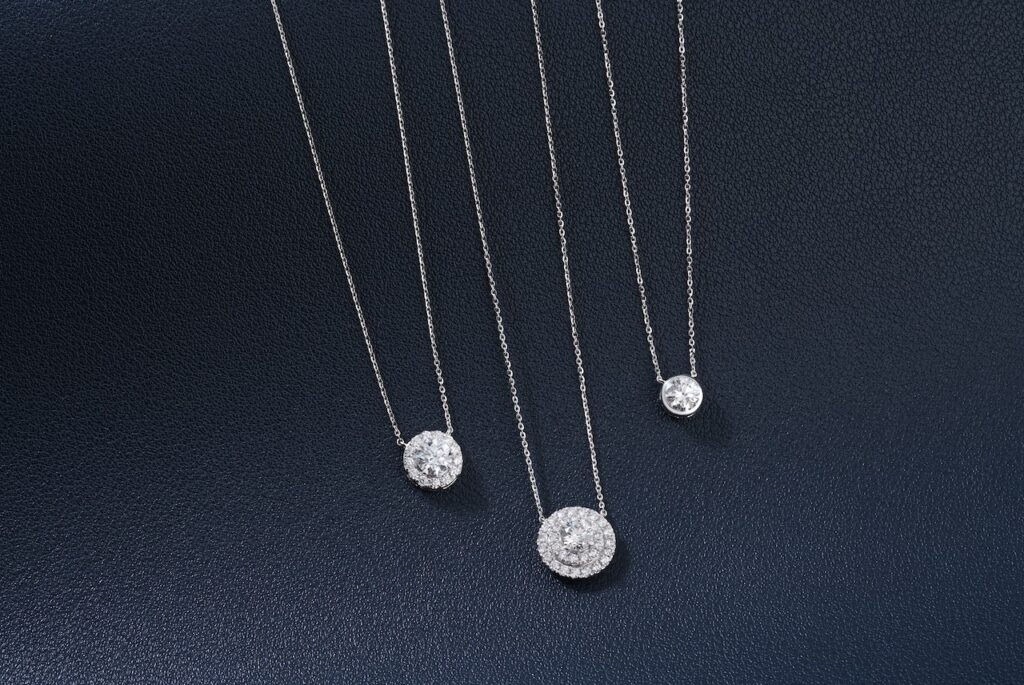When we think of jewellery, we think of diamonds. Over the years, the two things have become almost synonymous. However, as with everything diamonds have their pros and cons. We have put together 10 pros and cons of diamonds to help you to decide whether this is the gemstone for you. Diamonds work beautifully in any item of jewellery, whether they are used as the centre stone or just to add a touch of sparkle. Their classic look and versatile nature mean that they are often favoured by jewellery makers and designers. If you are on the hunt for your next piece of luxury jewellery, keep reading for our 10 pros and cons of diamonds.
10 Pros and Cons of Diamonds
Pro: Diamonds are remarkably durable
Diamonds are the hardest of all gemstones. They are rated at a 10 on the Mohs Hardness Scale. This is the official scale on which all gemstones are measured for hardness. A 10 is the highest possible rating, making diamonds the most durable and robust gemstones available. This factor makes diamonds a practical choice for jewellery that is likely to be worn every day, like engagement and wedding rings. A diamond is not likely to become scratched or damaged with normal day-to-day activity.
Con: They can have imperfections
Although we are used to seeing perfectly shining diamonds, this is not always the case. Diamonds are just as prone to flaws and inclusions as other gemstones. The quality of a diamond is measured using the Four C’s: cut, clarity, carat and colour. Each factor is rated on a scale. The purest and most perfect diamonds will be far more expensive than those with inclusions and impure colour. However, a good jeweller will know how to make a lower-quality diamond look its best and will set it in the appropriate way.
Pro: A neutral colour makes diamonds versatile
Diamonds are most frequently seen in their clear, or white, colour. This is the most popular and common form of a diamond. This neutral tone means that diamonds can be paired with any coloured gemstone to create a truly luxurious and glamorous look. This gemstone is often used as an accent stone or finishing touch in jewellery design as it adds extra sparkle without contrasting or clashing with any other gemstones in the piece. Diamonds can be found in a range of colours with many of them being naturally occurring. Although some may see this as an imperfection, others view it as an enhancement of the gemstone’s natural beauty.
Con: Diamonds are expensive
This gemstone is one of the most expensive on the market. This is caused by many factors. Diamonds are the most commonly used stone in engagement rings, causing them to be considered true luxury items. Over the years, diamonds have grown to become a symbol of wealth and opulence, making them very desirable. However, the main cause of the price of diamonds was an advertising campaign from the 1940s. This persuaded couples that a diamond engagement ring was the only way to go, allowing jewellery brands to artificially inflate their prices.
Pro: This gemstone can be cut into any shape
Diamonds are an incredibly versatile gemstone. A good gemstone cutter will be able to cut a diamond into a huge amount of shapes. this can vary from the traditional round brilliant cut to a marquise cut or even a heart-shaped cut. This variation means that there is a perfect diamond for every taste and style, ensuring that everyone who wants to wear this gemstone will find a way to fit it into their jewellery collection.
Con: A lot of people wear diamonds
People all around the world wear diamonds. It is likely that almost everyone you know wears diamonds in some form. This makes them one of the least unusual or unique gemstones on the market. For those people who enjoy wearing something different that will make them stand out from the crowd, this makes diamonds a less desirable option. However, when something is popular, it is important to ask why. Diamonds are versatile and durable, so it is possible to incorporate them into a more unique piece of jewellery too.
Pro: More affordable alternatives can be found in lab-grown options
As diamonds can be expensive, scientists are consistently working on ways to make them more accessible and sustainable. In recent years, lab-grown diamonds have become more common in jewellery design. As they are more affordable, people can choose larger gemstones for their jewellery. This option has also made diamond jewellery more accessible to those who may not have had the budget for it before. Lab-grown diamonds have the same structure and appearance as natural diamonds, making them almost impossible to tell apart. This is a huge development for the jewellery industry, and as technology continues to advance, this option will hopefully become available for other gemstones too.
Con: Lab-grown alternatives are not as valuable
The only downside to lab-grown diamonds is that they lose their value fairly quickly. As they are not natural and can be reproduced fairly quickly, these gemstones do not hold value. This will only really be an issue for those looking to resell their jewellery. If a lab-grown diamond is being used in a sentimental item, such as an engagement ring, then reducing value is not a big problem. However, lab-grown diamonds are not a good investment for those who often sell their jewellery.
Pro: They have a distinctive sparkle
Diamonds are famed for their sparkle. When walking past a jewellery shop, the first thing we tend to notice is the diamonds glistening in the sunshine. It is this sparkle that ensures diamonds are noticed on the hand, or around the neck or wrist. A perfect piece of diamond jewellery will catch the light with the wearer’s every movement, turning heads no matter the occasion. The diamond’s signature sparkle is not found in any other gemstone and is part of what makes them so special.
Con: Some diamonds have not been sourced responsibly
When shopping for diamonds, we frequently see phrases such as “conflict-free” and “no blood diamonds” come up. These labels are hugely important. Many diamonds have suspicious backgrounds. Some diamonds have been used to finance civil wars and others come from mines where the miners work in terrible conditions. In an age where many value sustainability and ethical practices, it is vital that a diamond is traceable. A good jeweller will not buy diamonds that cannot be traced, so will be able to provide information and history for their gemstones. Although this is a significant worldwide issue, it should not prevent you from buying these beautiful gemstones as most jewellers will only stock conflict-free diamonds.
If you are searching for the perfect piece of diamond jewellery, click here to browse diamonds on our website.
What are your thoughts on our 10 pros and cons of diamonds? Are you on the hunt for some diamond jewellery? Let us know in the comments!

